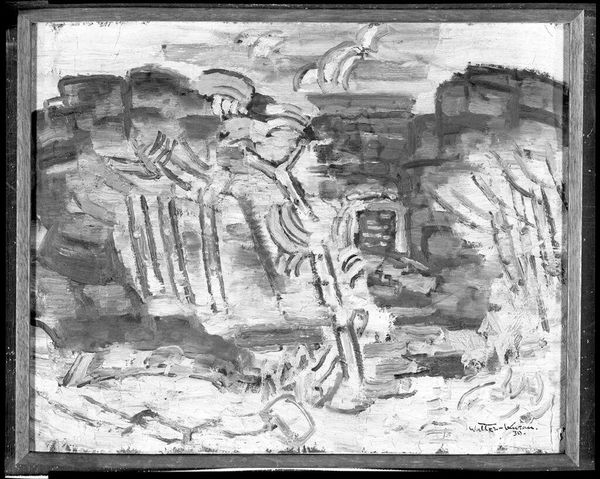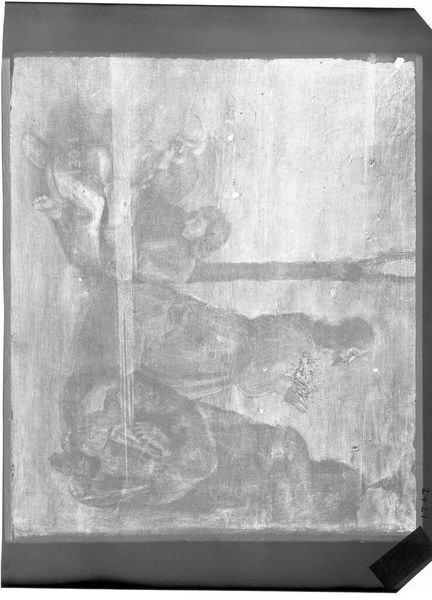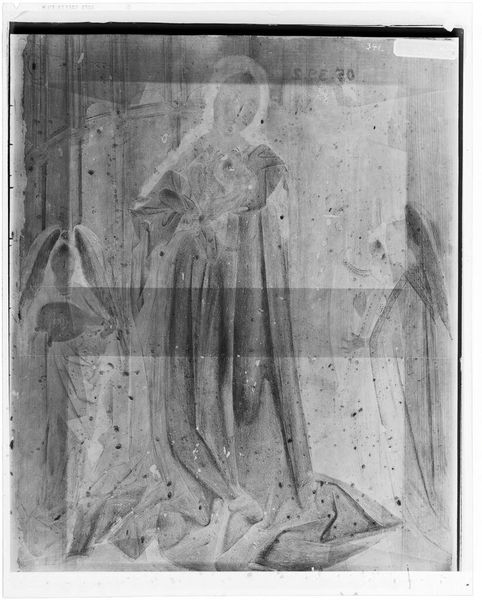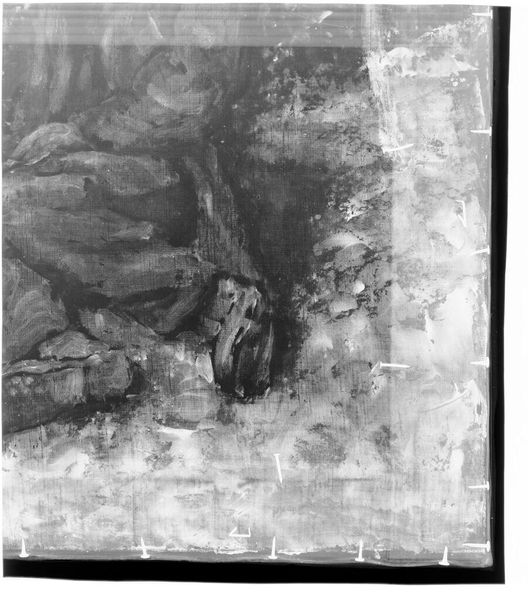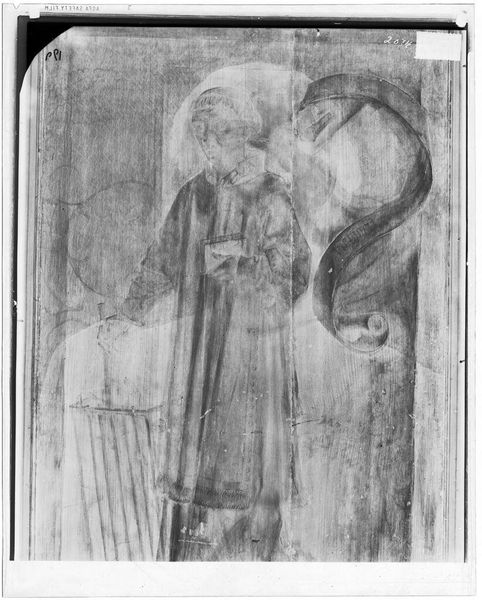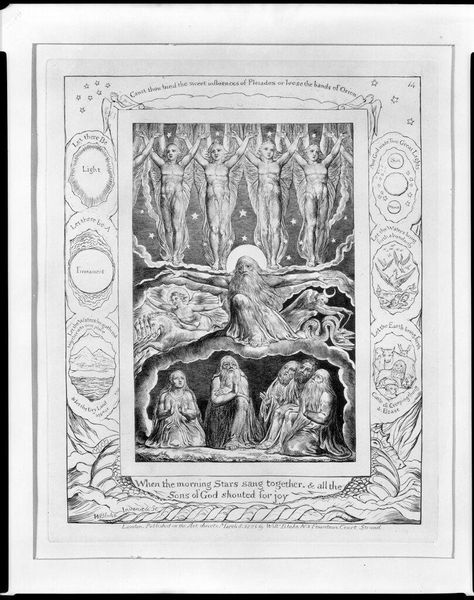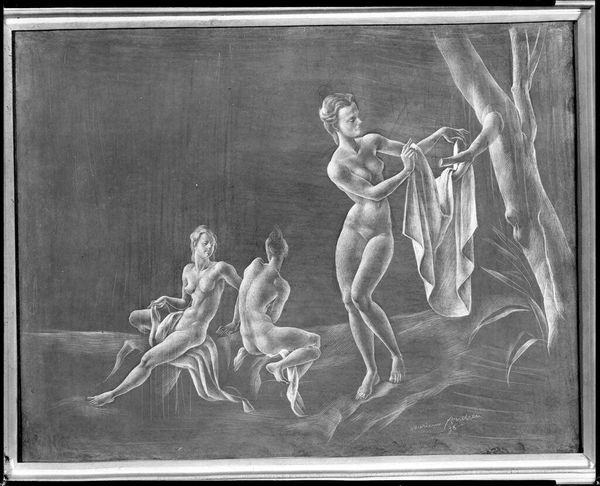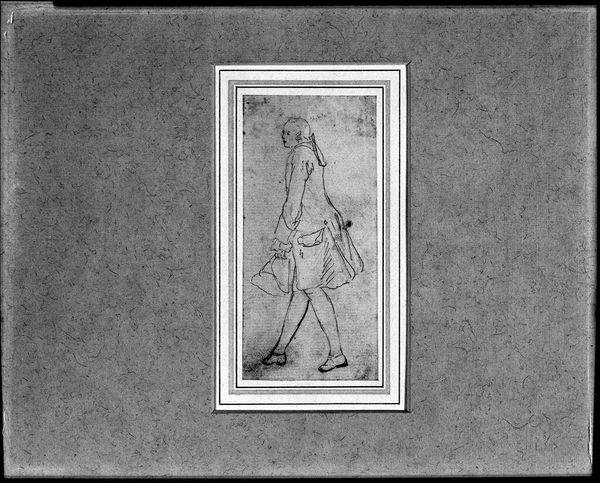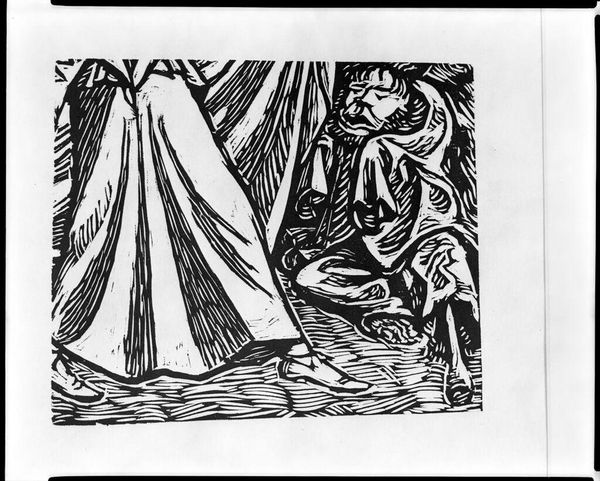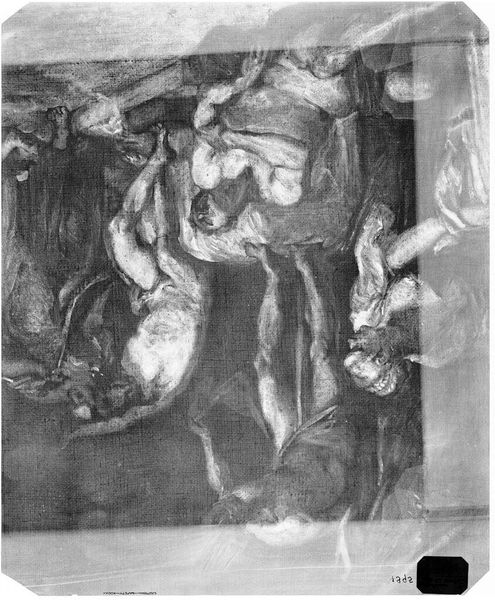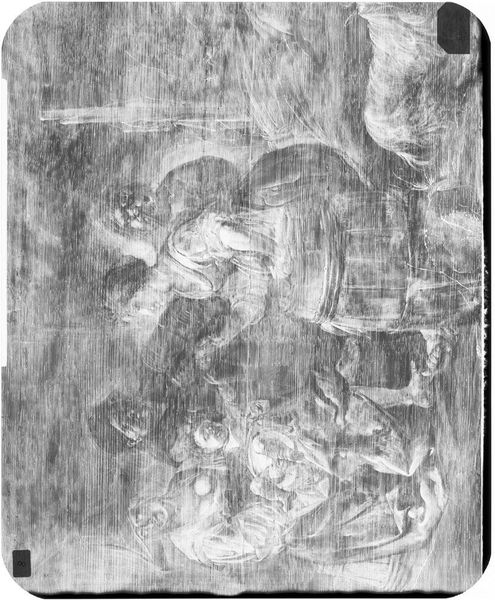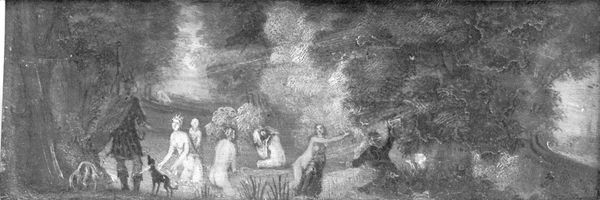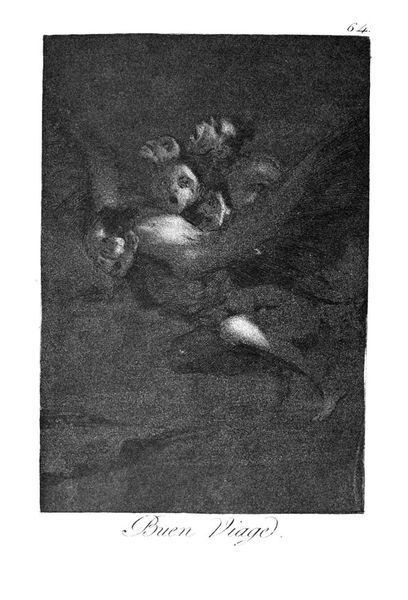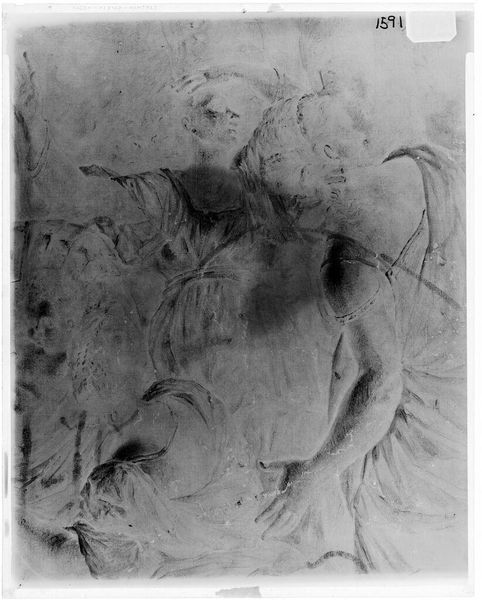
relief, bronze, sculpture
#
portrait
#
sculpture
#
relief
#
landscape
#
bronze
#
sculpture
#
decorative-art
Dimensions: 2 9/16 × 3 7/8 in. (65 × 98 mm)
Copyright: Public Domain
Curator: Before us, we have Louis-Oscar Roty's "Shepherdess," crafted in 1888 and housed here at The Metropolitan Museum of Art. Editor: The immediate feeling is one of pastoral calm, almost melancholic. The low relief and subtle shading create a subdued atmosphere. Curator: Absolutely. The bronze relief, I believe, contributes significantly to that effect. The choice of bronze, and the artist's method of modeling, likely involved a close relationship with the foundry workers. Roty was quite involved with the whole production. Editor: Yes, I agree. Notice how the composition is divided – the shepherdess with her staff is firmly on the right, contrasted with the grazing sheep occupying the majority of the composition. It's a study of contrasts – presence and absence, activity and stillness. Curator: The figure herself embodies classical ideals, draped garments giving way to a hint of Romanticism with that longing gaze. It brings forth this idyllic notion of rural life. Editor: Beyond any classical elements, what strikes me is the formal arrangement and careful composition. Note the diagonal lines formed by the staff and the placement of the sheep. This echoes a structured landscape rather than some uncontrolled field. This lends an emotional effect: serene perhaps, but also rather calculated. Curator: The fact that the medium of bronze can be easily mass-produced is rather important here. How does that influence your understanding of the image as opposed to being created in marble, for instance? Is it just aesthetic value? Or is there more? Editor: Well, the use of bronze flattens the detail. Because it allows light to play with smooth surfaces, this directs our view of the figures and, thereby, establishes compositional priorities of the work. It's a system of visual cues to direct our attention. Curator: True. Understanding Roty's process--his artistic decision-making from modeling the original sculpture to supervising the bronze casting reveals so much. This reflects social values of the late 19th century, as art increasingly moved into commodity culture. Editor: By the way, I had forgotten all this background context, thanks to your insights on the socio-economic milieu. Now it will inform my reading next time I look at the composition, for sure! Curator: Well, it works both ways; looking closely at the arrangement helped me re-evaluate the original context and, as a result, it shifted the way that I looked at it.
Comments
No comments
Be the first to comment and join the conversation on the ultimate creative platform.
